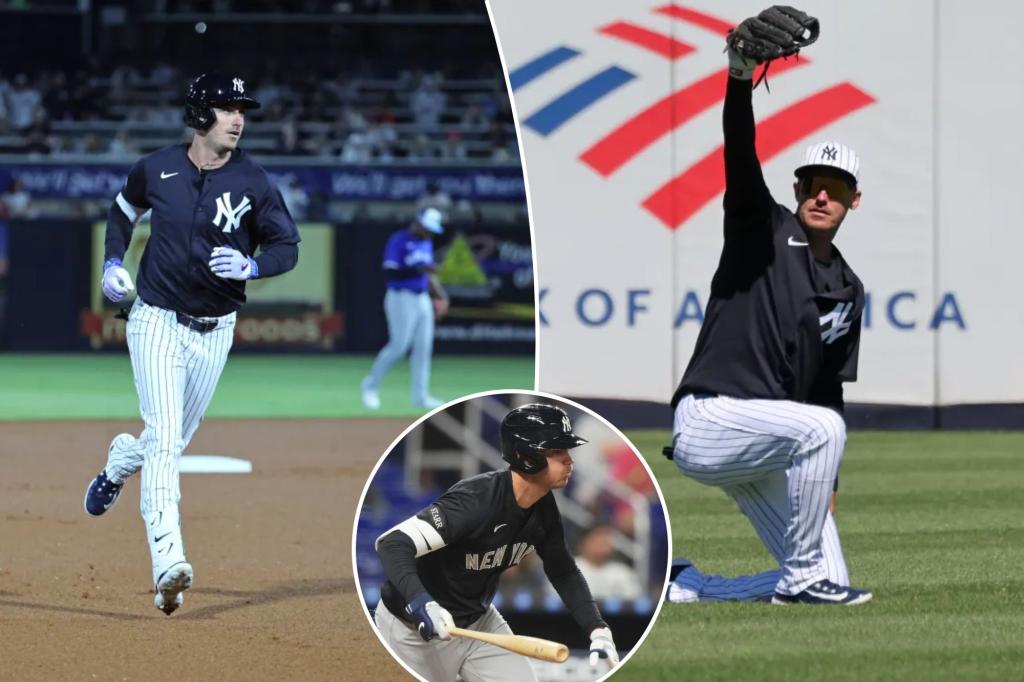Summarize this content to 2000 words in 6 paragraphs
There might not be a major leaguer who can relate with the roller coaster that Cody Bellinger has ridden.
The Yankees center fielder has been arguably the best player in baseball, the National League MVP in 2019.
He was arguably the worst regular in baseball in 2021-22, when he combined for a .611 OPS that was the second worst in baseball among players with at least 800 plate appearances.
He bounced back the past two seasons and has settled in as an above-average, if not quite elite, contributor.
Beginning Thursday in The Bronx against the Brewers, his journey takes him to a new home that on paper fits him perfectly and a new team for which he looms as perhaps the biggest wild card.
“He’s been really dialed in, it seems like, from jump,” manager Aaron Boone said of Bellinger, who likely will be his Opening Day center fielder and the No. 3 hitter who provides Aaron Judge protection.
Bellinger had an excellent spring in which he hit .400 with three home runs and a 1.124 OPS.
Over the years, the lefty swinger has made consistent adjustments trying to find a swing and swing approach that works.
There might have been reason for Bellinger to tweak his cut again entering this year, when he will be playing half his games in a ballpark that is built for a lefty hitter like him.
But no, Bellinger said this spring, he has not reconfigured his stroke to try to take full advantage of the short, Yankee Stadium porch.
When his natural swing is going right, he said, his batted balls tend to go to the right, too.
“The second you start trying to pull, [it is] bad news, in my opinion,” Bellinger said during camp. “Put my swing on the inside part of the baseball, and good things happen.”
Good things tend to happen for lefty hitters who pull the ball at Yankee Stadium, although it will be curious to see which version of Bellinger steps into the box in The Bronx.
Bellinger pulled the ball most often in 2022 (47.2 percent), a final, lost season with the Dodgers in which he hit .210 with 19 home runs and did not appear completely recovered from shoulder surgery.
He rebounded the following two seasons with the Cubs and both looked more healthy and a bit different: He made much more contact (striking out just 15.6 percent of the time) while his power and exit velocity dipped (averaging 22 homers per season).
From the outside, it seems as if Bellinger was willing to sacrifice some of his pull-side pop for contact.
If such a trade-off were made, Bellinger said he was not doing so consciously: He simply had more success barreling up pitches.
“Honestly, the answer is, I was aware of where my barrel was, and I was aware of how my body was moving,” Bellinger said, “and that allowed me to hit the ball more consistently on the barrel.”
This spring, for what little it is worth, Bellinger carried over his contact skills (16.1 percent strikeout rate) while lifting his exit velocity. Boone and Bellinger agreed it is a good start and one that doesn’t yet mean much.
Still, there is intrigue whenever a lefty hitter who does his best work pulling pitches arrives at the Stadium, which Jazz Chisholm Jr. knows well.
“If your swing automatically goes that way, like how Bellinger’s is, nothing for him to tweak,” Chisholm said. “Like me, most of my fly balls go to the right field, I don’t have to tweak my swing. So for us at least, [we need] to stay consistent but just do what you do more.”


